Fostering Agility and Innovation in Business
Explores how businesses can boost agility and innovation by adapting decision-making, avoiding bureaucracy, and fostering continuous learning in …
Enhancing an organisation’s ability to respond to market shifts and competitive pressures.


Market adaptability refers to an organisation’s capacity to swiftly respond to changes in market conditions and competitive dynamics. This concept is crucial as it empowers teams to pivot their strategies, products, and processes in alignment with evolving customer needs and external pressures. By fostering a culture of responsiveness, organisations can enhance their ability to deliver value predictably and sustainably, ensuring that they remain relevant and competitive over time.
Market adaptability is not merely a reactive measure; it is a proactive approach that integrates continuous learning and feedback loops into the organisational fabric. This enables teams to anticipate shifts rather than merely react to them, allowing for more strategic decision-making and resource allocation. It encourages a mindset that values experimentation and innovation, which are essential for long-term success in a rapidly changing environment.
Unlike concepts such as Agile frameworks or Lean principles, which focus on specific methodologies or practices, market adaptability encompasses a broader, systemic view. It requires an alignment of organisational culture, leadership, and operational practices to create an environment where adaptability is ingrained in everyday activities. This holistic approach ensures that teams are not only equipped to handle immediate challenges but are also prepared for future uncertainties, ultimately driving sustained growth and resilience in the face of change.
Explores how businesses can boost agility and innovation by adapting decision-making, avoiding bureaucracy, and fostering continuous learning in …
Learn how to turn scope creep into an advantage by adopting Agile methods, focusing on value delivery, and adapting to changing requirements in …
Learn how Agile principles help businesses improve predictability by addressing challenges, optimising systems, aligning goals, and adapting to change …
Learn how empowering teams, streamlining communication, and providing context enable organisations to respond rapidly to market changes and gain a …
Evidence-based management uses data-driven decisions to help organisations achieve business outcomes, adapt to market changes, and maximise value …
Explores why traditional hierarchical organisations struggle in fast-changing markets and argues for agile, decentralised structures to boost …
Cell Structure Design is an organisational design model developed by Niels Pfläging, rooted in the principles of the Beta Codex. It replaces …
Scrum Masters are most effective when they combine leadership skills with technical, business, and organisational mastery to support teams, Product …
Ensure fast, reliable development with Continuous Integration (CI). Merge code frequently, detect errors early, and maintain a healthy codebase.
Enhance forecasting in Agile and Scrum. Use empirical data to predict delivery timelines, manage risk, and optimise value delivery.
Explains how slow product release cycles delay feature delivery, risk losing relevance, and create competitive disadvantages, highlighting the …
Optimising the throughput of work across the value stream to improve speed and reduce bottlenecks.
Continuous Delivery is the practice of frequently delivering small increments of valuable product directly to real users, enabling rapid feedback, …
Technical Excellence encompasses engineering practices and methodologies that enhance agility, improve code quality, and enable continuous delivery.
Teams struggle not from lacking frameworks, but from ignoring feedback. Success depends on acting on signals, fostering safety, and empowering real …
Drive change with Agile Leadership. Foster adaptability, empower teams, and create a culture of continuous improvement.
Master estimation in Agile and Scrum. Improve forecasting, manage uncertainty, and align expectations using empirical data and collaborative …
Embrace Beta Codex for decentralised, adaptive, and human-centric organisational design. Enable true agility beyond rigid hierarchies.
Lead successful Agile Transformations. Shift mindsets, evolve processes, and enable true organisational agility.
Mentoring program for product managers and leaders to master Agile, product management, UX, and evidence-based decision-making, with Scrum.org …
Explains how short-lived topic branches in source control improve software quality, enable modularity, speed up integration, and support agile, …
Measuring individual cycle time in Kanban misleads teams, hides real bottlenecks, and harms flow. Focus on system-wide metrics like PCE, WIP, and …
Ensuring continuous delivery of incremental improvements to users and stakeholders.
Explore how combining human decision-making with AI-driven automation boosts team accountability, agility, and measurable value in modern …
Undelivered software provides no value. Frequent, iterative releases reduce risk, cost, and failure, enabling faster learning and real user impact in …
Using experimentation and validated learning to drive product decisions.
Leverage Artificial Intelligence to enhance decision-making, automation, and innovation in Agile, DevOps, and software development.
An approach to understanding and managing organisations, systems, and uncertainty using complexity science, emergence, and nonlinear dynamics. Incudes …
Explores how effective product ownership and lean delivery drive alignment, collaboration, adaptability, and continuous improvement in modern product …
Building the Minimum Viable Product to test ideas and validate market assumptions quickly.
Most companies struggle with agility due to rigid structures, outdated processes, and cultural barriers, not technical issues. True agility requires …
Is your engineering culture built to thrive on change? Discover how to create resilient, adaptive teams that stay ahead in a fast-moving tech world.
Approaches to planning incremental and iterative software releases.
Azure DevOps is a product from Microsoft that provides tools around CI/CD, collaboration, and agile project management. Other names are Team …
Explores the gap between accountability and authority for Scrum Masters and Product Owners, highlighting the need to empower roles responsible for …
Explains how involving everyone in Professional Scrum training fosters organisational agility, breaks down silos, and empowers teams to drive …
Techniques and strategies for improving operational efficiency and delivery.
Minimising waste and maximising value through iterative learning and continuous improvement.
The Product Owner is an accountability in Scrum, responsible for maximising product value through effective backlog management and stakeholder …
Company as a Product (CaaP) is an organisational strategy that treats the entire company as a continuously evolving product, rather than a static …
Many organisations use excuses to avoid Agile, but even large, regulated bodies can adopt iterative delivery to reduce risk and deliver value …
Technical debt requires leadership investment to resolve; without support for automation and quality improvements, continuous delivery is not …
Automating builds, tests, and deployments with Azure Pipelines.
Tracking the time taken to complete a unit of work from start to finish.
Hiring an unqualified Scrum Master limits team growth, reduces agility, and hinders value delivery. Effective Scrum Masters drive change, coaching, …
Explains why modern software teams avoid branch promotion, using continuous integration, feature flags, and production-like testing to streamline …
Frequent software releases reduce risk, enable faster feedback, and help teams adapt to user needs, preventing costly mistakes and improving overall …
Unreleased features create hidden costs and risks. Regular software delivery reduces failure rates, rework, and missed opportunities, ensuring real …
Improve clarity and readiness with Backlog Refinement. Ensure work is well-defined, prioritised, and ready for execution.
Explores why organisational responsiveness and real-time decision-making are crucial for staying competitive, highlighting the risks of outdated …
Mentoring program for developers and teams to master Agile, DevOps, Kanban, and evidence-based practices, fostering engineering excellence and …
Explains how Scrum supports continuous flow and agility by prioritising Sprint Goals, Done increments, CI/CD practices, and outcomes over rigid sprint …
Stop firefighting late-stage bugs, discover how shifting left saves time, money, and reputation by building quality in from the start. Learn the …
Explores how practical use of Scrum fosters adaptability and resilience in teams, highlighting the value of flexibility over rigid rules in complex …
Explores key challenges in adopting DevOps, including managing evolving risks and closing feedback loops, with strategies for rapid iteration, …
Explores how automation in testing, deployment, and validation streamlines development, reduces technical debt, and builds confidence for teams and …
Learn how agile metrics like innovation rate, product index, usage index, and version adoption help identify waste and improve ROI by focusing on …
Delivering usable, working products frequently is key to reducing risk in Agile. Focus on feedback, automation, and lean practices over excessive …
We partner with businesses across diverse industries, including finance, insurance, healthcare, pharmaceuticals, technology, engineering, transportation, hospitality, entertainment, legal, government, and military sectors.
NIT A/S

Big Data for Humans

YearUp.org

Genus Breeding Ltd

SuperControl

Epic Games

Trayport

Higher Education Statistics Agency

Freadom

ALS Life Sciences

Workday
Boxit Document Solutions

Hubtel Ghana

Kongsberg Maritime
CR2

DFDS

Schlumberger

New Signature

Washington Department of Transport

Royal Air Force

Department of Work and Pensions (UK)

Washington Department of Enterprise Services

Ghana Police Service

Nottingham County Council

Boeing

Cognizant Microsoft Business Group (MBG)

Flowmaster (a Mentor Graphics Company)

Philips

New Signature

Slicedbread